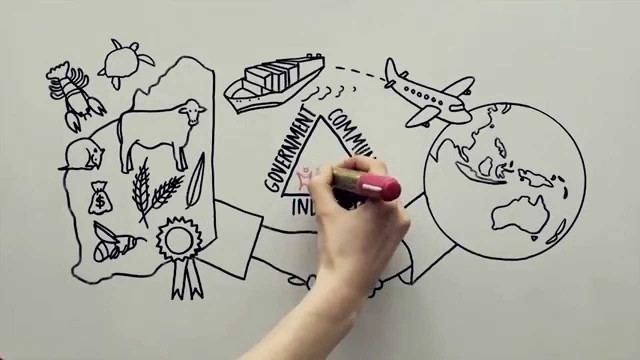

05:10
Oct 18, 2021
3
6
'Invasion curve animation – Biosecurity Council of WA https://www.agric.wa.gov.au/bam/biosecurity-council Narrated animation Every West Australian can help protect our State from pest and disease threats that impact on businesses, industry, the economy, the environment and our lifestyle. Western Australia has an enviable biosecurity status, free from many of the world’s worst pests and diseases – a reputation that opens doors to opportunities, especially trade. This reputation is at risk as our exposure to possible biosecurity threats increases. It is important that we work together – government, industry and community – to maintain our biosecurity defences. But, how can our efforts best provide social, economic and environmental benefits for our communities and industries? The Generalised Invasion Curve is a useful tool to summarise where government, industry and community should direct their efforts and investments at various stages of an invasive species’ incursion. The Curve illustrates the increasing area occupied by an invasive species over time. If a plant or animal pest or disease was introduced into Western Australia and left unchecked, it would increase in its spread – or distribution – and number of individual organisms – its abundance – until it became established across all its potential habitats. The Invasion Curve also identifies the most appropriate course of action to take, depending on the distribution and abundance of the invasive species. These are categorised as prevention, eradication, containment and asset-based protection. Before an invasive species reaches our borders, investment in prevention, preparedness and surveillance, as well as research to better understand a species’ behaviour, will minimise the risk of an incursion. It’s much more cost effective to prevent threats like myrtle rust, red imported fire ants and foot and mouth disease than to manage them once they’ve entered the State. Once an invasive species crosses our borders and we know where it is, our efforts are best aimed at stopping it from spreading further and eradicating it if we can. Eradication relies on both knowing how far an invasive species has spread and having appropriate tools to completely eliminate it. The economic benefits of the eradication of invasive species, such as starlings and Queensland Fruit Fly, outweigh the costs; and the environmental and social benefits can also be important. Support for containment is necessary when an invasive species has got beyond eradication and the priority is to prevent it from spreading further, like in the case of Cane Toads. The economic returns on containment are generally lower and, on balance, environmental or social outcomes may be more important when making decisions to act. Once an invasive species becomes established and widespread beyond containment lines, the focus becomes protecting key assets, such as farmland, industries, recreational areas and natural ecosystems. Typically, the return on this investment is relatively low. However, this can be difficult to measure – for example, how do we put a price on the value of saving a native species from extinction? The economic, social and environmental benefits of asset-based protection can be far reaching. Foxes, Patterson’s curse and rabbits are good examples of invasive species that are widespread, and where containment is no longer an option. Here, the community and industry are best placed to protect particular assets, while government plays a key role in protecting the State’s biodiversity. Surveillance is an integral part of every stage of the Invasion Curve. It is essential to prevent an incursion and to confirm eradication, and is critical to safeguarding key assets. Everyone can play a role in biosecurity surveillance by keeping an eye out for the unusual, and reporting it when noticed. Cooperative efforts are critical to successful biosecurity protection and response. The Invasion Curve provides a simple, yet effective, way to quickly and responsibly evaluate the best course of action to minimise the impact from invasive species. By having a clear understanding of how we work together across the Invasion Curve we can strengthen our biosecurity defences to maintain Western Australia’s desirable biosecurity reputation and all the opportunities and benefits it provides. Acknowledge: Department of Environment and Primary Industries, Victoria Acknowledge: Biosecurity Council of Western Acknowledge: Department Agriculture and Food, Western Australia Read more at: You can also find Department of Agriculture and Food WA on Twitter: https://twitter.com/DAF_WA Facebook: https://www.facebook.com/DepartmentofAgricultureandFoodWA Linkedin: https://www.linkedin.com/company/department-of-food-and-agriculture-wa/'
Tags: Western Australia , government , Agriculture , biosecurity , DAFWA , Biosecurity Council of WA
See also:










!['RAW shopping to RAW Dinner Day for Oliang&nomyen [ASMR] MUKBANG 犬が生の肉を食べる[咀嚼音] Dog VLOG'](https://cdn-img01.foodbl0g.com/images/40-m/783/783928_m.jpg)






comments